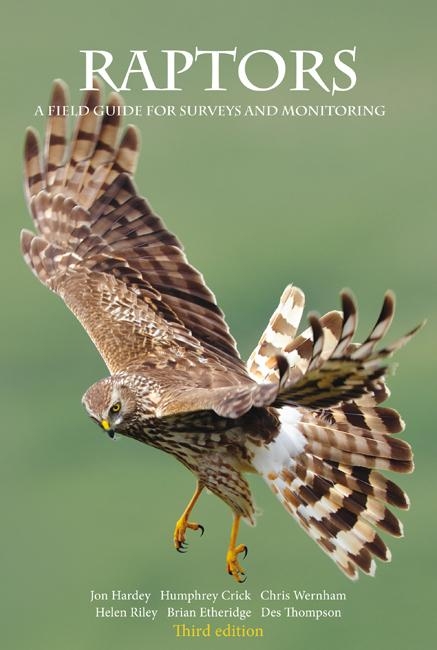Publications

The value and importance of our work can be measured by the hundreds of scientific and popular publications that have benefited from our data. You can view the full list here
Please click here to see the publications list.
One particularly important publication is the best-selling book Raptors: A Field Guide for Surveys and Monitoring (third edition) published in 2013 (available from The Stationery Office, Edinburgh). Here’s the foreword, written by the world’s leading authority on raptor research, Professor Ian Newton:
It is a pleasure to write a foreword for this second edition so soon after the first edition was published and then reprinted. The demand for this book is a measure of its value to raptor researchers.
Birds of prey have, from time immemorial, fired the human imagination. Over the ages they have been symbolised, even deified. But in 19th century Britain, they were ruthlessly destroyed in the interests of game management, and in the middle of the 20th century some species suffered further massive declines following the introduction of organochlorine pesticides in agriculture . In recent years, however, with increased legal protection, reduced use of organochlorines, and active conservation management, some raptor species have recovered from low population levels . Nevertheless, given the complex range of factors currently influencing raptors, including changes in land management and climate, continuing persecution and declining prey populations, there is a great need for accurate information on numbers, distributions and population changes of these spectacular birds.
Many raptors are elusive, and for birdwatchers, catching fleeting glimpses of the birds themselves, or finding their pellets, plucked prey remains or moulted feathers, has long added to the excitement of days in the field. For scientists, raptors provide the challenge of understanding variation in numbers – either from region to region or from year to year – and the complexities of relationships between predators, prey and habitat.

This book provides in-depth descriptions of field techniques for breeding season surveys of all the diurnal and nocturnal birds of prey which nest regularly in the British Isles. It is based on the collective knowledge and experience of scores of raptor enthusiasts who have learned their field craft over many years. Since the early 1980s, the Raptor Study Groups, now with a membership of more than 300 volunteer specialists organised into regional groups, have played a vital role in collecting data on raptors in Britain and Ireland. These groups have also provided a forum for the exchange of information and ideas about survey techniques, and have been key to the development of national surveys of a growing number of species. It is pleasing to know that so much of that experience is reflected in this book.
As well as this remarkable wealth of personal field experience, the book draws on published and unpublished data and information, and identifies gaps in knowledge. Written and edited by a team of ecologists and raptor specialists, the book is aimed at people with an interest in surveying and monitoring raptors for scientific and conservation purposes. I believe this manual will interest both seasoned as well as less-experienced raptor fieldworkers, and should be invaluable to raptor enthusiasts throughout Europe and beyond.
The present state of our knowledge of these birds is a credit to the many dedicated fieldworkers who have accumulated the necessary information through years of hard physical effort and painstaking observation. People studying raptors should find this book indispensable, and might wish to reflect on the fact that the equivalent of many lifetimes of field experience have been tapped for its production.
Professor Ian Newton OBE, FRS, FRSE.


